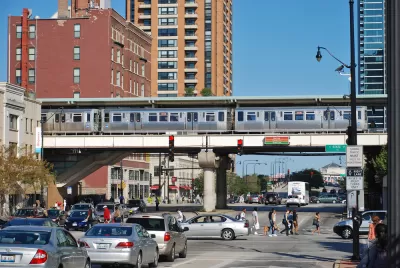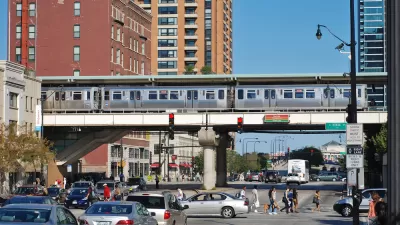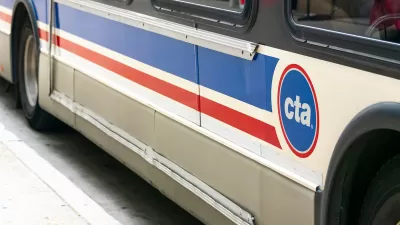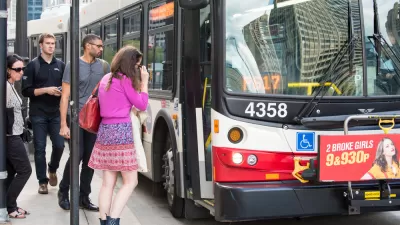The city’s transit agency made changes to its schedules to make wait times more predictable and streamline services on the most popular routes, but riders are still experiencing headways longer than before the pandemic.

Half a year into the Chicago Transit Authority’s redesigned service plan, rider complaints persist, writes Sarah Freishtat in the Chicago Tribune. “It’s not as convenient and streamlined as it used to be, especially for rush hour,” says one commuter. “The CTA is still running far fewer trains than scheduled on its two busiest lines, and the agency, like other transit systems around the country, continues to face bus and train operator shortages.”
Riders also express concerns about crime. “The Tribune found in December that the rate of violent crime on CTA trains began to drop in 2022 for the first time since the pandemic emptied public transit of many riders, but it was more than twice as high as the years before the pandemic.”
The agency changed listed wait times on its schedule and upgraded its trackers to limit ‘ghost buses’ in an effort to make headways more predictable and reliable. “CTA spokesman Brian Steele said the schedule changes don’t amount to running less service than before they were put in place, and they better match the actual service running.” But an ongoing operator shortage is making it difficult for the CTA to run more trains, and headways on some lines remain much longer than before the pandemic.

Study: Maui’s Plan to Convert Vacation Rentals to Long-Term Housing Could Cause Nearly $1 Billion Economic Loss
The plan would reduce visitor accommodation by 25,% resulting in 1,900 jobs lost.

North Texas Transit Leaders Tout Benefits of TOD for Growing Region
At a summit focused on transit-oriented development, policymakers discussed how North Texas’ expanded light rail system can serve as a tool for economic growth.

Why Should We Subsidize Public Transportation?
Many public transit agencies face financial stress due to rising costs, declining fare revenue, and declining subsidies. Transit advocates must provide a strong business case for increasing public transit funding.

How to Make US Trains Faster
Changes to boarding platforms and a switch to electric trains could improve U.S. passenger rail service without the added cost of high-speed rail.

Columbia’s Revitalized ‘Loop’ Is a Hub for Local Entrepreneurs
A focus on small businesses is helping a commercial corridor in Columbia, Missouri thrive.

Invasive Insect Threatens Minnesota’s Ash Forests
The Emerald Ash Borer is a rapidly spreading invasive pest threatening Minnesota’s ash trees, and homeowners are encouraged to plant diverse replacement species, avoid moving ash firewood, and monitor for signs of infestation.
Urban Design for Planners 1: Software Tools
This six-course series explores essential urban design concepts using open source software and equips planners with the tools they need to participate fully in the urban design process.
Planning for Universal Design
Learn the tools for implementing Universal Design in planning regulations.
City of Santa Clarita
Ascent Environmental
Institute for Housing and Urban Development Studies (IHS)
City of Grandview
Harvard GSD Executive Education
Toledo-Lucas County Plan Commissions
Salt Lake City
NYU Wagner Graduate School of Public Service





























